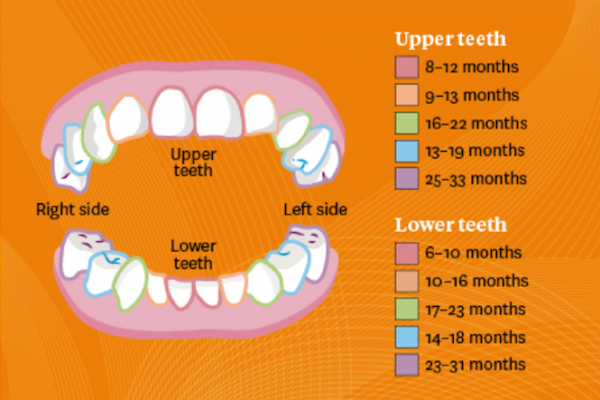Giving your baby something cold to suck or chew on can help relieve the pressure and soothe inflamed gums.
- If they have started solids a chilled banana may be soothing, but watch closely because of the risk of choking on small bits.
- Some babies like sucking on a flannel that has been moistened and put in the freezer for a few hours.
- You can also buy solid, silicon-based teething rings that you cool in the fridge (not freezer – too cold) and give to your child to chew on.
- Don't dip them in sweet substances such as honey or syrup as this may lead to dental cavities. Teething biscuits and rusks that contain sugar are not recommended.
Also try gently but firmly massaging or pressing on your baby's gums, using a clean finger or soft cloth. If this obviously upsets your child do not continue.
Teething gels such as Bonjela soothing teething gel® can be bought over the counter at your supermarket or pharmacy. There's little evidence that teething gels are effective in reducing the pain and discomfort associated with teething. This may be because most of the gel is likely to be quickly removed by the tongue and saliva.
Read more about Bonjela soothing teething gel®.
Video: How do I soothe my teething baby?
This video may take a few moments to load.
(NHS, UK, 2015)







